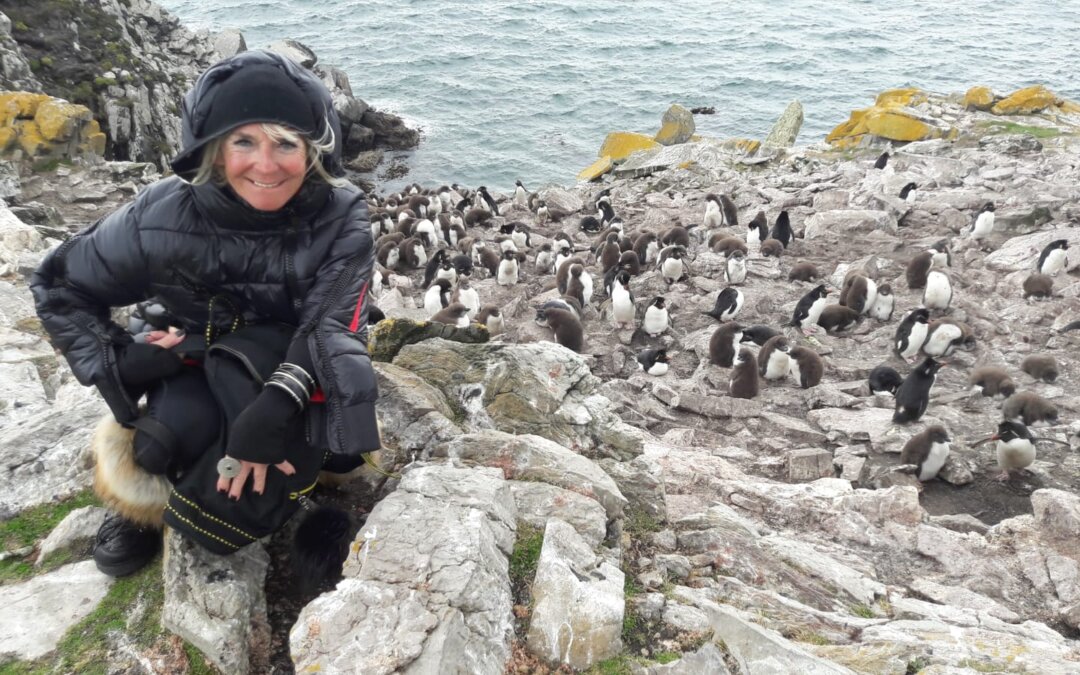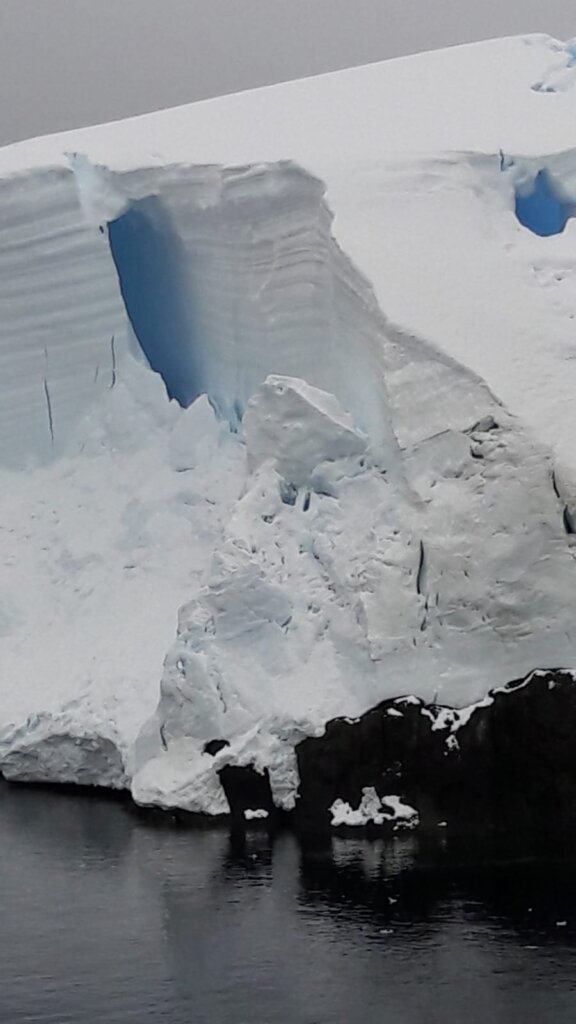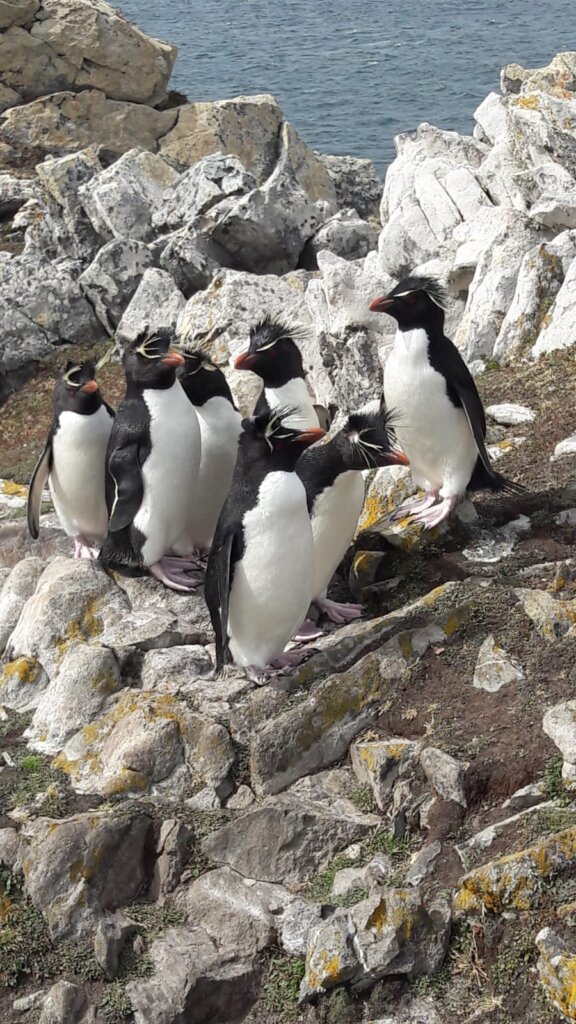You cannot sit still? Get carried away! That has always been my objective – for at least 50 years, while hiking around the world. It was similar this time, too.
My friends, hearing that I was organising an expedition to Antarctica – the last, seventh continent I hadn’t managed to penetrate before – claimed I’m nuts. However, knowing me, they knew that nothing and nobody would talk me out of this idea.
In the second half of January 2020 I put my foot on Antarctica, the land I had dreamed of for so many years. The summer was in full swing there, moderate temperatures, from eight to zero centigrades. Once I was welcomed by the sun and the temperature was as high as 18°C. But it lasted for a moment only.
Antarctica is the largest reservoir of ice in the world, where the ice cover is 1-4-km thick, and its surface is larger than the area of Europe, from Portugal in the west, to the Urals in the east. It is the highest continent on the Earth, and the lowest temperature that was noted by weather stations in 1982 was -89,2°C. However, Antarctica, just like Sahara, has its oases. These areas are free from ice and snow, and there are lakes – full of sea creatures. There are numerous penguin colonies, mosses and lichens in the oases.
If the masses of ice melted, the continent would elevate by almost 100 meters. Huge chunks of ice calve from the coastal glaciers (some of them are even 150-km-long and almost 150-m-high). Over 200 thousand ice bergs drift in the Arctic seas. The grandeur of ice forms that are shaped like spires and pillars, fragile palaces, blocks that look like humans and animals, whiteness that sparkles with a thousand shades, scare with terrifying emptiness but also impress with unique beauty.
While looking at those ice wonders I was curious whether they had been constructed by a mad architect or they were the unimaginable, artistic craft of the nature itself?
Antarctica is a place that hasn’t been polluted yet, a stunningly beautiful continent, where the nature has supremacy and absolute power. Its climate, cruel for every living creature, makes the continent the only uninhabited part of the world.
Any newcomer, before they feed their eyes with the view of ice, tries to notice wild animals. On a hard winter only few species, like seals, walruses, whales, dolphins and leopard seals, manage to survive. But in the summer, when tiny creatures swarm in the waters, quite a large number of guests come to the shores.
A very important living species that lives here, pink and orange krill, is barely visible as it is hidden under the ice. This crustacean feeds on algae and phytoplankton. This 5-cm-long creature is similar to a shrimp and weigh 2 grams. Without it there would be no life we know on our planet. Each creature living in Antarctica, even if it does not feed on krill, feeds on something that feeds on krill.
Attracted by the abundance of food, large flocks of birds come here. The most numerous are penguins that crowd on the glaciers.
Believe me, the morning sadness disappears when you look into red eyes of a penguin.
One of the islands – Danger, habitually referred to as Heroin, is inhabited by about half a million of Adélie penguins – the white-eyed birds with orange eyelashes. When looking at them closely, for a moment I wondered whether they used the wonderful Herla eyelash care oil everyday (ha ha ha).
The white-eyed is one of the two species of penguins that breed on Antarctica. The other is the famous Emperor species, that reach 100 cm in length and their chicks are the only living creatures in the world that hatch in the winter in Antarctica.
When you meet a penguin, it is always the animal, not the man, that has right of way. We should also keep a safe (for the penguin, of course) distance of five meters. It is practically impossible, as colonies of penguins are very numerous, courageous and trustful (they haven’t been hurt by a man). You even have to be careful not to bump into one. Sometimes you just need to sit on a stone and wait patiently and a nosy bunch of penguins with orange eyelashes will flock around you and, what is more important, will climb into your lap, arms and often will sit on your head. Penguins feed mostly on pink krill, therefore their guano is pink, too. My protective anorak after a visit of those wonderful birds was completely destroyed.
On land, those birds march, assuming stiff, straight posture, trying to keep the balance. They do not have knees and they use their tail as the third leg. The whole clumsiness disappears when they dive into water. Through evolution, they light-heartedly “fly” in the sea, floating on the surface of water like miniature dolphins. It’s a fascinating view.
I reached Antarctica while I was chasing my dreams. I survived a storm, swam around Cape Horn, followed the trail of Scott, Amundsen and Shaeleton – polar explorers. Now I may start exploring the world anew. And I believe I will get carried away.
Zofia Suska



